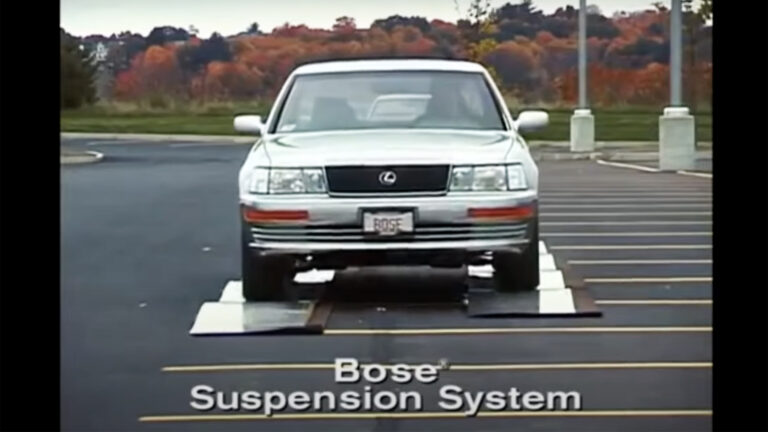Over twenty years ago, a video of a Lexus LS400 seemingly defying the laws of physics shocked the world. Riding on a prototype electromechanical proactive suspension developed by the audio company Bose, the luxury sedan bunny-hopped over curbs, skipped individual wheels over potholes, cornered completely flat, and held its body perfectly level at speed over undulating pavement. It looked like magic, and to some degree it was.
Sadly it was totally impractical for mass production in 2004, and Bose eventually gave up on the project and sold off the rights to the tech. Meanwhile, the demo clips lodged themselves in the internet as a prime example of amazing technology that didn’t make it. Every few years, the videos go viral again as a new round of people ask why we can’t get something this cool in new cars today.
And at last, now you can. OK, almost.
Last month, the proactive suspension—which is now owned and further developed by an American company called ClearMotion—finally hit the streets in China in its first use in a production car, the electric Nio ET9. It’s just the start of a deal with Nio that will put the suspension in 3 million cars. As Automotive News points out, that kind of scale could really help bring down costs as ClearMotion is getting ready to enter a partnership with Porsche and holding talks with other European automakers. You can see just how impressive it is in the video below.
In other words, Bose’s suspension is finally having the global moment we’ve been waiting for. And we have been waiting! In 2018 (I cannot believe that was seven years ago), we wrote a story about ClearMotion installing its suspension in a BMW 5 Series and its CEO working on deals with “five major manufacturers” that would bring the tech to mass production in 2020. To be fair, we know what happened there.
Also to be fair, this isn’t exactly Bose’s suspension. The original version replaced traditional dampers with linear electric motors that used sensor data to literally move the wheels up and down and cancel out bumps. ClearMotion adapted the control software and applied to active valve dampers with a magnetic fluid.
Still, you have to step back and appreciate that this technology is finally stepping out of a 240p YouTube video and into reality in new cars. Speaking of, we also recently wrote a story about someone finding one of the original Lexus LS400 Bose prototypes for sale as a parts car on Facebook Marketplace. It’s a good read, I promise.
Now that the Bose/ClearMotion magic carpet suspension has moved beyond its conceptual testing phase, there’s no stopping the tech from being applied to anything and everything. CYVN Holdings, the investment firm keeping McLaren afloat, is also an investor in Nio. A trickle-up effect is undoubtedly imminent.
In the Porsche deal, the German automaker will utilize ClearMotion1 but also launch RoadMotion, a proactive chassis control software that “fingerprints” road surfaces. The software stores the scanned information to create a localized street profile, which the system will auto-adapt to when driving through the area again.
Read the full article here

